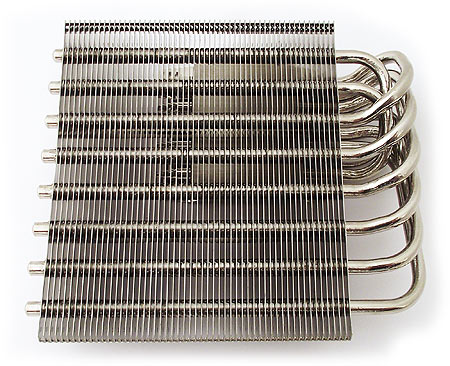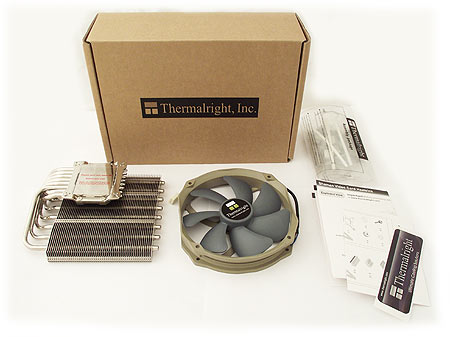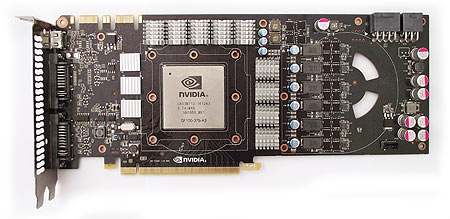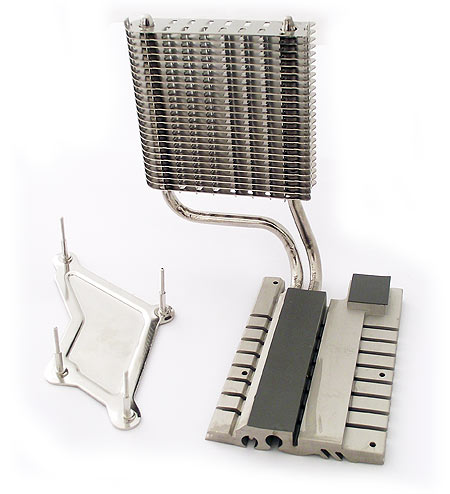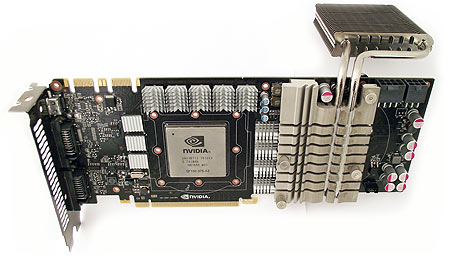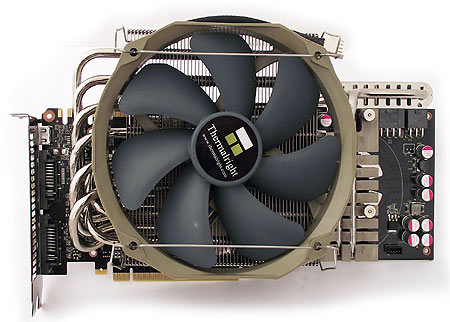Thermalright's Shaman VGA Cooler: The Quiet Giant?
Thermalright's Shaman is the largest VGA cooler we've ever seen. Having recently reviewed three competing aftermarket graphics cooling solutions, we're eager to find out if size really matters when it comes to overclocking the ultra-hot GeForce GTX 480.
Thermalright's Shaman: A Closer Look
Just like the competition that we'll be comparing it to, Thermalright's Shaman VGA cooler is able to work on a number of different graphics cards. It is compatible with most high end Radeon HD 3800- to 5800-series cards and most high-end GeForce cards from the 8800 series, GTX 200 series, and GTX 400 series.
The Shaman will also fit the new Radeon HD 6950/6970 series and GeForce GTX 570/580, but the Radeon HD 6850/6870 is not compatible.
The Shaman cooler weighs 500 grams, but tips the scales over 660 grams with its mammoth 140 mm fan attached. This is heavier than the stock cooler and most aftermarket options, but it's surpassed by the 759 gram DeepCool V6000.
There are a lot of heat pipes to transfer heat from the cooling block--eight, to be exact, the most on any VGA cooler to date, according to Thermalright. To cool them down, the 140 mm fan can push up to an advertised 73 CFM of air at a low 21 decibels. While the entire cooling assembly appears to be aluminum, the cooling block is actually nickel-plated copper.
The understated cardboard box is classic Thermalright packaging, and inside we find the cooler, 140 mm fan, instructions, sticker, and assembly package containing the hardware we'll need for installation.
With the reference GeForce GTX 480 cooler removed and the contact surfaces cleaned appropriately, the RAM and VRM heat sinks must be applied. This is where the Shaman delivers its only disappointment, as the thermal tape isn't strong enough to stick to the small VRM components. The RAM sinks stick well enough, but Shaman owners who want to keep the critical VRM components cool will need another strategy, such as stronger thermal tape or thermal adhesive. We try to avoid thermal adhesive when possible because of its permanent nature.
A representative of Thermalright let us know that they are aware of this problem and that the company prefers to stay away from super-sticky tape, as it can break components if the heatsinks are removed. Thermalright says it'll supply Shaman buyers with replacement sticky tape if they request it. While it's nice that that the company acknowledges the issue we encountered, it's disconcerting that the VRM heatsinks will not stick the way the product is being shipped.
Get Tom's Hardware's best news and in-depth reviews, straight to your inbox.
While we'd prefer to use the VRM heat sinks included with the Shaman, we look to a separate Thermalright product to solve our VRM cooling woes: the VRM-G2 cooler.
The VRM-G2 is specifically designed for the GeForce GTX 480, and it's certainly an impressive piece of cooling hardware when you consider its VRM-specific nature. It can even be fitted with an 80 mm fan, if the user wants to purchase one separately. This makes sense, of course, since the VRM gets very hot, and keeping it cool is a critical strategy for overclockers.
The large VRM cooler is an interesting heavy-duty solution to VRM cooling, but it may have trouble fitting in some cases (we needed to modify our test bed to accommodate it). It should be noted that the VRM-G2 costs $35 alone at frozencpu.com, and it's separate from the cost of the Shaman. Before you start sinking this much money on aftermarket air cooling, consider what you could sell your existing card for on Ebay or a forum, and what it might cost to simply buy your way up to more guaranteed performance. After all, the VRM-G2 and Shaman, together, cost an additional $115 beyond what you've already paid.
With the VRM problem addressed, we can continue with the Shaman installation, an easy task that involves only four screws and a bracket on the rear of the card. The Shaman dwarfs the large GeForce GTX 480 PCB and makes the card appear even more formidable. Now that we have the hardware installed, let's see what it can do to keep the GF100 cool and quiet.
Current page: Thermalright's Shaman: A Closer Look
Prev Page The Big Daddy Of VGA Cooling Next Page Test System And BenchmarksDon Woligroski was a former senior hardware editor for Tom's Hardware. He has covered a wide range of PC hardware topics, including CPUs, GPUs, system building, and emerging technologies.
-
Great it you only have 1 GPU and no other expansion cards because the thing takes up like 4 slotsReply
-
dstln It looks like a good option for enthusiasts who want a quiet system. Besides that, I fail to see the point.Reply -
tomskent It would of been nice to take a picture of the card looking down on it from the top so we could see/estimate how many slots it would take up.Reply
how many slots does it exactly take up?
-
duk3 It's not a case, it's a test bed.Reply
You aren't going to set this up in SLI, especially with the VRM heatsink going one way and the 140mm fan going the other. -
fatkid35 ultra mega E peen points. this in a case would look like the backside of your refrigerator.seriously, go look right now!Reply -
zodiacfml thanks for the nice conclusion. on the same note, watercooling and large air heatsinks are same with this cooler right here, there isn't much to be gained in terms of adding more clock speed.Reply
for the right reasons, i would still get WC or large sinks.
